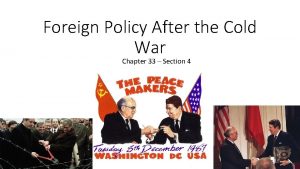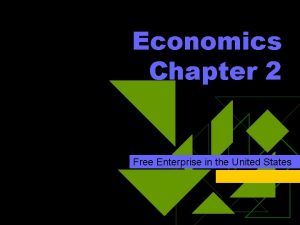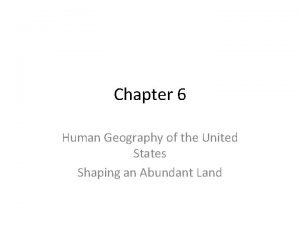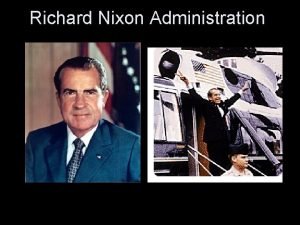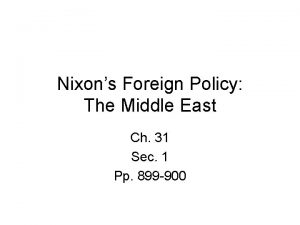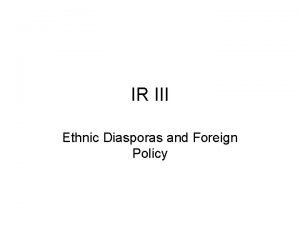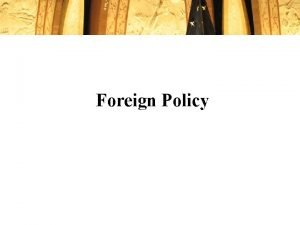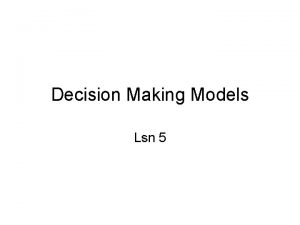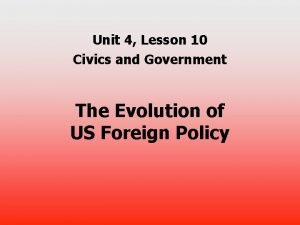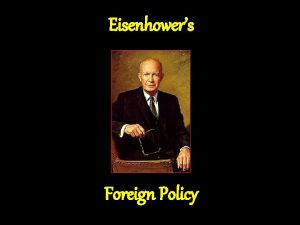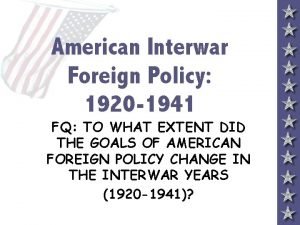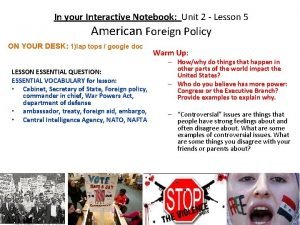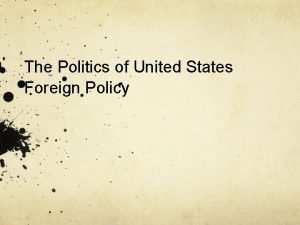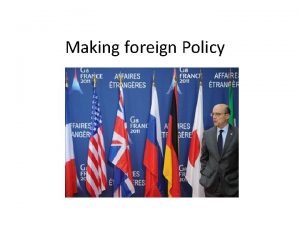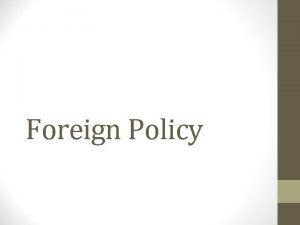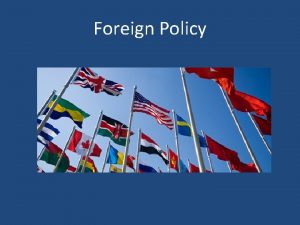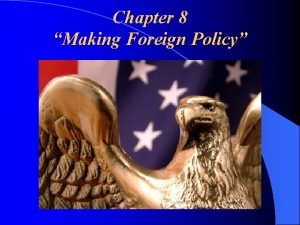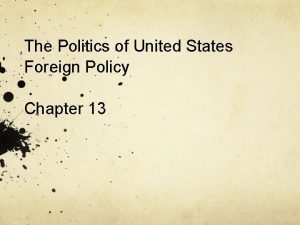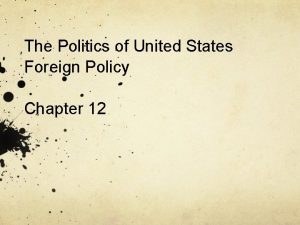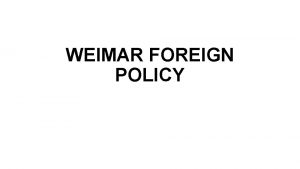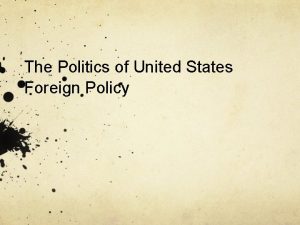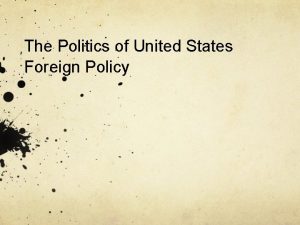The Politics of United States Foreign Policy Chapter

















- Slides: 17

The Politics of United States Foreign Policy Chapter 5

Bureaucratic politics issues and why they are important agencies are supposed to perform separate but interrelated fp functions which are then supposed to be coordinated through the National Security Council and by the President. relative influence of these competing agencies has changed over time. there has been the emergence of numerous new agencies on fp making scene

The Bureaucracy Hierarchy Specialization Routinization

The Bureaucracy: How its studied Historical context Functions Structure Subculture

Bureaucratic Model of Decision -Making interactions among different government organization bargaining process results in decisions results in power plays and competition where you stand is where you sit: individuals represent preferences of bureaucracies therefore assumes: agencies with competing interests are involved in decisionmaking process agencies bargain for outcomes recognizes wide-range of possible conflicts among agencies with authority over some aspect of foreign policy used when personal preferences not taken into account and bargaining process is effective

Historical Context of the Bureaucracy Pre-WWII: apex of the state department Post WWII: decline Importance of international affairs Rise of U. S. power Global communications revolution Use of force as a favored policy tool Importance of international economics

State Department Structure pyramidal structure Secretary of State at the top three major agencies five undersecretaries secretary, undersecretaries, and assistant secretary are political jobs/appointments that must be approved by Congress representation in most of 185 nations/entities that are members of United Nations Ambassadors are head of embassies abroad

State Department Subculture bright, talented apt people snobbish, elitist hostile to outsiders anti-academic elite East colleges and universities generalists believes they are the repository of foreign policy knowledge and resents new presidents and administrators that try to tell them what to do therefore will sometimes fail to implement directives of White House and choose to carry out its own policy has not come to grips with changes in fp like pluralism, democratization, and public opinion Foreign Affairs Training Center does not do adequate job preparing foreign service officers for missions abroad

Subculture of the State Department Five perceived characteristics: Elitist or exclusivist Preference for overseas appointments, identify Emphasis on diplomacy and negotiation Generalists Loyal and cautious

Functions of the State Department Represent U. S. government abroad Express the views of foreign governments Diplomacy Analyze and report Policy advice

Structure of the State Department: Foggy Bottom • Size/Composition • Hierarchy: – – Secretary of State Deputy secretary of state Undersecretaries Bureau: assistant secretaries and deputy assistant secretaries • Geographic • Issue oriented

Structure of the State Department: embassies and consular posts Ambassador Deputy chief of mission Country Team Others

Structure of the State Department: patterns Hierarchy Complex policy process Issue-based Personnel: Insider’s versus outsiders Political appointments Career FSO’s

The State’s weaknesses Perceptions and behaviors Example: Future of Iraq Project Defense department v. State

State’s strength: individuals Secretaries of State Insider-outsider dilemma Examples: Powell and Rice

Public diplomacy USIA BBG, Department of state Media, information Voice of America, etc. Public diplomacy and culture Exchange programs

USAID Agency for International Development (1961) In Department of state (1998) Budget 7 core strategic goals
 Chapter 33 section 4 foreign policy after the cold war
Chapter 33 section 4 foreign policy after the cold war Too foreign for here too foreign for home
Too foreign for here too foreign for home Chapter 2 free enterprise in the united states
Chapter 2 free enterprise in the united states Chapter 6 human geography of the united states
Chapter 6 human geography of the united states States west of the mississippi
States west of the mississippi 1790 foreign policy
1790 foreign policy Foreign policy of louis philippe
Foreign policy of louis philippe What was thomas jefferson foreign policy
What was thomas jefferson foreign policy Nixons foreign policy
Nixons foreign policy Nixons foreign policy
Nixons foreign policy Actors in foreign policy
Actors in foreign policy Definition of foreign policy by scholars
Definition of foreign policy by scholars Rational actor model cuban missile crisis
Rational actor model cuban missile crisis Unit 4 lesson 10 american foreign policy
Unit 4 lesson 10 american foreign policy Truman foreign policy vs eisenhower
Truman foreign policy vs eisenhower Interwar america
Interwar america Lesson 5 american foreign policy
Lesson 5 american foreign policy Hitler's foreign policy timeline
Hitler's foreign policy timeline
